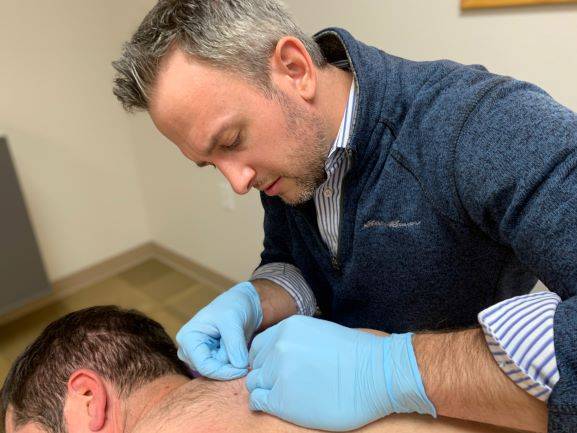Dry Needling For Pain Management
Dry needling, when performed by a trained and licensed practitioner, is a safe and efficient treatment for pain. It can provide long-lasting comfort by targeting trigger points and relieving muscle tension. Additionally, exercise can increase blood flow to injured tissue, providing vital oxygen and nutrients. This expedites recovery time for injured areas and allows you to return to daily activities more quickly.
Frequency of Treatments
Dry needling is an effective treatment for muscle and connective tissue trigger points (TrPs), used for pain management. It’s a safe, drug-free, noninvasive technique that can reduce discomfort while aiding healing. Depending on your condition, the frequency of treatments may differ. However, many patients experience improvements after just one session. Your physical therapist or doctor of chiropractic will determine how often you should receive dry needling sessions based on your symptoms and desired outcomes. If you are dealing with chronic pain, it is essential to continue treatment in order to sustain any improvements made and prevent symptoms from returning or worsening. Research is still needed to determine the optimal frequency, duration and intensity of dry needling for many neuromusculoskeletal conditions. With future research, clinical guidelines could become standard practice.
Initial Session
Physical therapists use dry needling to address trigger points, which are tender nodules located in muscles that radiate pain when touched. They can cause intense muscle spasms and are commonly caused by overuse or repetitive strain. Trigger points are common symptoms associated with muscle weakness, restricted range of motion (ROM), and referred pain. These conditions often develop following overuse or direct trauma to the muscle, and can disrupt normal recovery processes for muscles as well as prevent rehabilitation efforts. At your initial session of dry needling, your therapist will locate a trigger point, clean it to reduce infection risks, hold or pinch off the muscle and insert very fine sterile microfilament needles into it. This causes the muscle to contract and relax. Many patients report immediate relief in their pain and mobility after dry needling, though the duration of relief varies among individuals.
Maintenance Session
Dry needling is an alternative therapy that utilizes thin monofilament needles to address muscle, bone, and tendon dysfunctions. It often works in combination with other modalities for long-lasting therapeutic results. Your therapist will identify and manipulate trigger points (muscle knots) that cause pain or restrict movement. They insert a needle directly into the trigger point to stimulate what’s known as a local twitch response, in which taut muscle fibers contract to produce an anti-painful response. You may experience some mild discomfort during the procedure. Your provider will also massage the affected area to relieve any tension and promote tissue regeneration. Dry needling is an effective treatment for muscle and tendon injuries, myofascial pains, and joint sprains that occur while running. It helps reset the healing process, increases local blood flow to the injured area, and encourages collagen regeneration.
Follow-Up Session
Dry needling has proven to be an effective treatment for muscle pain and stiffness in many patients. It offers a safe, natural alternative to prescription pain medicine and surgery. This procedure utilizes filiform needles to stimulate myofascial trigger points in the muscle, helping promote healing by releasing stored lactic acid and improving blood flow to the area. As part of your comprehensive physical therapy program, it is recommended that you visit your physical therapist every four to six weeks for follow-up sessions. At this session, your physical therapist will insert needles into the muscles and joints causing pain and stiffness. Your therapist will then release trigger points, reduce discomfort and enhance movement. After your treatment, you may experience some soreness for a few days. This is normal and typically goes away on its own within 24 hours. Your therapist may suggest stretching and other practices to reduce any discomfort you experience.
If you’re interested in learning more about dry needling or other physical therapy services, visit Simply Physio or contact us to schedule an appointment with our team of specialists.



